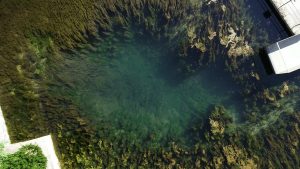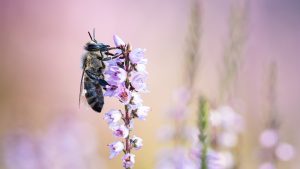Sundew
Sundew is a very special plant: Its small rosette of leaves lies directly on the ground and can therefore easily be overgrown by stronger plants – if it were not for their very special adaptation to extremely nutrient-poor, wet peat and raw soil locations. The plant gets the nitrogen it lacks at these points by attracting, catching and digesting insects. And so it can grow where other plants can no longer find enough nutrients.
There are many small tentacles on the leaves of the round-leaved sundew. They consist of a stem and a viscous drop at the end. Small insects such as mosquitoes are attracted by the shiny and fragrant drops and held in place by the sticky liquid. If the tentacles are stimulated by the movements of the insects, they move towards the centre of the leaf, eventually the entire leaf bends in and surrounds the insect. The enzymes contained in the drops dissolve the insect down to the chitin shell within a few days. Special glands absorb the nutrients in the plant. Then the leaf spreads out and is ready to catch again. With the round-leaved sundew (Drosera rotundifolia) and the middle sundew (Drosera intermedia) two species occur in the Senne.







